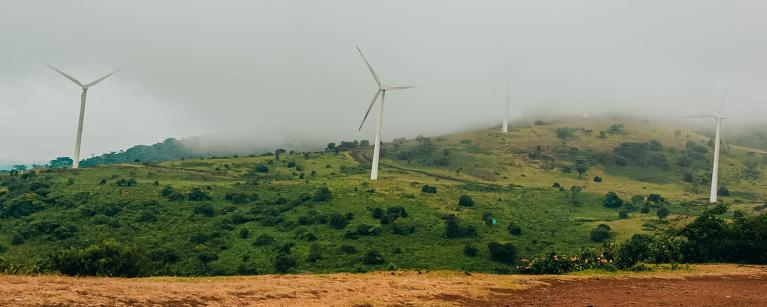Kenya’s power utility sector has been majorly characterized by a single power off-taker, the Kenya Power and Lighting Company, and power generating companies comprising Kenya Generating Company (KENGEN) and independentpower producers. Kenya has made great progress over the last decade in improving access to electricity.
Approximately 75% of Kenya’s households have access to power which represents about 8.9 million households out of 12 million households. Its installed capacity is about 3,074 MW which comes from an energy mix majorly derived from renewable sources. Through several initiatives such as the Last Mile Connectivity Programme, Kenya has exponentially increased access to electricity establishing itself as one of the most developed power sectors in Sub-Saharan Africa.
The power sector has undergone significant reforms over the years aimed at expanding access to electricity, improving efficiency, promoting renewable energy and enhancing the overall performance of the utility sector. These reforms include restructuring and liberalization of the power sector by unbundling the utility company, opening up the Kenyan power generation market to independent power producers (IPPs), enacting the Energy Act 2019, promoting renewable energy, energy purchase frameworks being the Feed in Tariff System, Energy Auction Policy and Power Purchase Agreements, strengthening of institutions, rural electrification, off-grid and mini-grid solutions, energy power pools and energy efficiency and conservation measures and smart grid technologies. These reforms have altered the organization and the structure of the power sector which has improved its efficiency.
However, despite the progressive reforms, Kenya’s electricity utility sector still faces several challenges. This includes weaknesses in power distribution segments, the politicization of the utility company management, system and commercial power losses, and inadequacy in providing equitable, affordable and efficient electricity utility services among other challenges such as costly power purchase agreements. These challenges have threatened the financial stability of the power utility company and resulted
in huge costs and debts.
Many jurisdictions have been able to correct the inefficiencies in electricity utility governance. These jurisdictions have implemented several strategies that have enabled them to tackle the challenges faced by KPLC. The efficiencies of Kenya’s electricity utility sector can be gauged based on several indicators including the level of access to electricity, the cost of electricity, the reliability of the power supply, and the environmental impact of
electricity production. Norway, Sweden, Iceland, Finland and Australia provide benchmarks from which Kenya can learn in most of the indicators. This is especially on having a reliable, efficient, and sustainable electricity system that provides access to electricity for all citizens, while also balancing economic, social, and environmental considerations.
While the government has played a critical role in promoting good governance of the electricity utility sector, civil society organisations have also organized themselves in offering sustainable solutions towards electricity utility governance. They have become essential stakeholders, especially in advocacy for proper governance particularly on behalf of the most vulnerable, fostering dialogues between government and the people, providing expert views, influencing policy and legislative frameworks and promoting public participation to encourage a people-centred form of governance. This has made the involvement of civil society organizations vital to electricity utility governance.
There are notable individuals and organizations in the civil society space that have assisted in the advancement of electricity utility governance in Kenya. Examples include the Electricity Consumers Society of Kenya (ELCOS), which has participated in sustaining conversations about issues such as electricity tariff review, public interest litigation on electricity issues and consumer awareness. It has been involved in advocating for affordable and reliable power supply. ELCOS comprises of experts in the electricity industry who have been involved in public participation forums on behalf of consumers. Another notable civil society entity in this regard is the Kenya Climate Change Working Group (KCCWG).
The KCCWG) has contributed in the promotion of universal energy access through advocacy for decentralized renewable energy. Third, is the Alliance of Civil Society Organizations for Clean Energy Access
(ACCESS), which has been involved in promoting affordable
and sustainable access to electricity. In general, the participation of civil society groups has assisted in the growth of access to electricity for poor households which has assisted in reducing energy poverty and promoting inclusive economic growth. Okiya Omtatah and Jerotich Seii are also notable voices in civil societies.
The purpose and objective of this comprehensive report is to analyze the gaps in Kenya’s electricity governance and suggest ways these gaps can be addressed especially through civil society engagement. Kenya’s electricity governance sector faces several challenges as highlighted above.
Civil societies have a crucial role to play in providing solutions through advocacy, expert advisory and offering solutions in emerging issues such as energy transition
in the electricity sector, implementation of sustainable energy initiatives, development of informational materials, establishment of networks to support good governance, for instance, linking development partners with local governments, and also developing monitoring tools. These are just among the many roles civil societies can play in Kenya electricity utility governance.
